Chemical Senses II - Olfaction
Introduction
Smell combines with taste to help identify foods & increases enjoyment of food
Can also warn against harmful substances or places
We can smell thousands of substances but only some of them smell good
Smell can also be used for communication
Pheromones are a signal for reproductive behaviors & identification of individuals
Organs of Smell
Do not smell w/nose, smell w/small thin sheet of cells in nasal cavity called olfactory epithelium
Olfactory epithelium has three cell types:
Olfactory receptor cells
Genuine neurons
Have axons that go into CNS
Supporting cells
Similar to glia
Produce mucus
Basal cells
Source of new receptor cells
Olfactory receptors regenerate every 4-8 weeks, one of very few neurons that do this
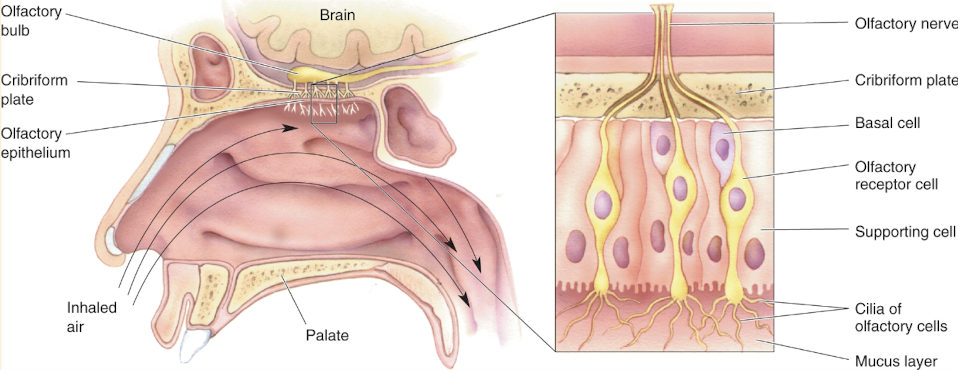
When you sniff only small percentage of air passes over olfactory epithelium
Epithelium contains thin coating of mucus
Flows constantly, replaced every 10 mins
Odorants dissolve in mucus layer before reaching receptors
Mucus contains antibodies that protects brain (and body) from viruses & bacteria
Odorant binding proteins: small & soluble molecules that help concentrate odorants in the brain
The bigger the olfactory epithelium & the more receptors there are, the more a species can smell
Humans are actually weak smellers
Olfactory Receptor Neurons
Have single thin dendrite that ends w/small knob @ surface of epithelium
Knob has small cilia
Odorants dissolve → bind to cilia → transduction pathway activates
On opposite side of olfactory receptor cell is thin unmyelinated axon
Collectively axons constitute olfactory nerve
Axons penetrate cribriform plate & course into olfactory bulb
Anosmia: inability to smell
Olfactory Transduction
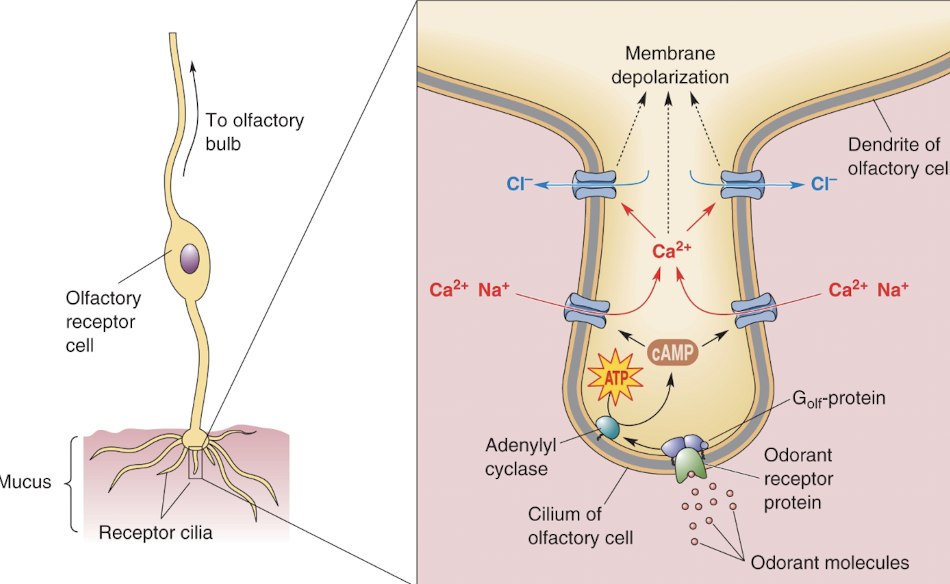
Odorants bind to membrane odorant receptor proteins
G-protein stimulates
Adenylyl cyclase activates
cAMP forms
cAMP binds to cyclic nucleotide gated cation channel
Cation channel opens & allows influx of Na+ & Ca2+
Open Ca2+ activated Cl- channels
Cl- current flow & membrane depolarization (receptor potential)
If reaches threshold will propagate action potential
Reasons olfactory response may terminate
Odorants diffuse away
Scavenger enzymes in mucus break odorants down
cAMP in receptor cell may activate other signaling pathways that end transduction process
In continuing presence of an odorant the strength of smell fades bc response of receptor cell adapts to odorant in a minute
Adaptation ^
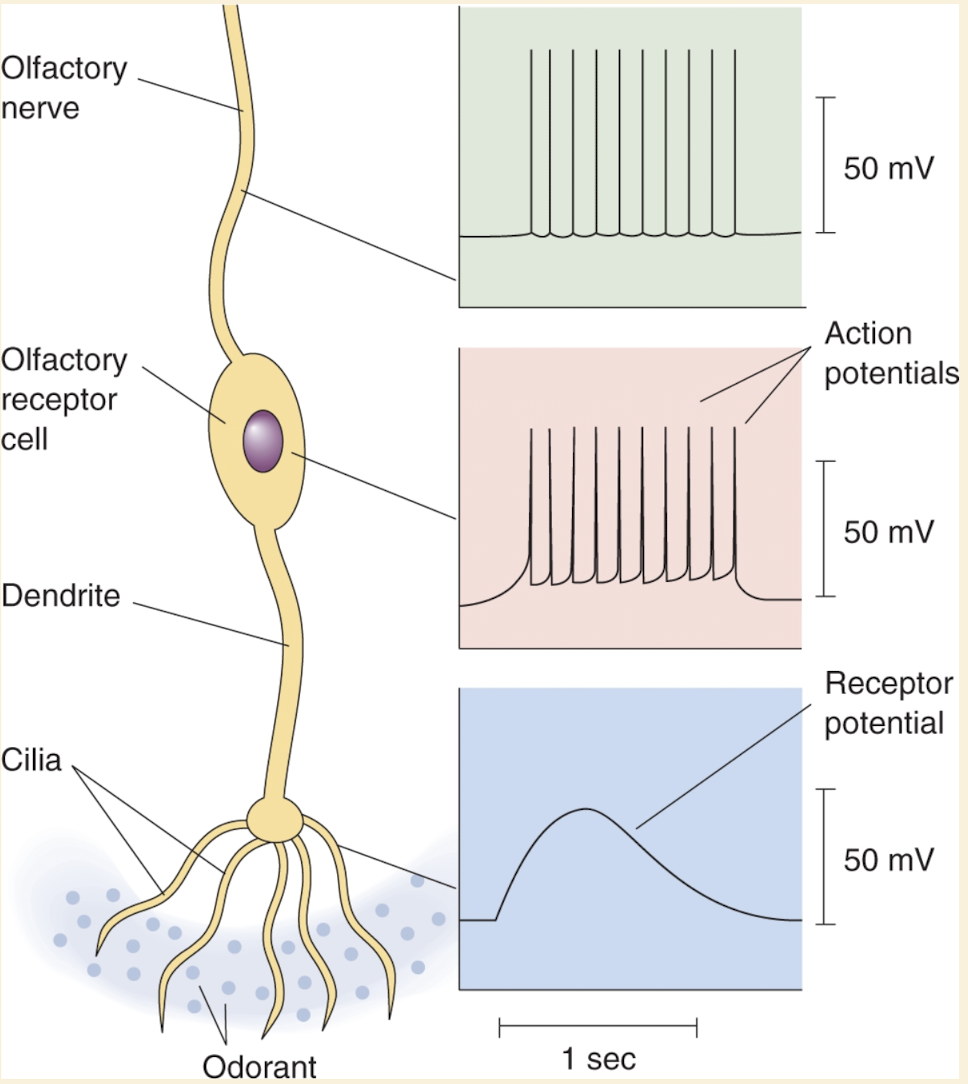
Olfactory Receptor Proteins
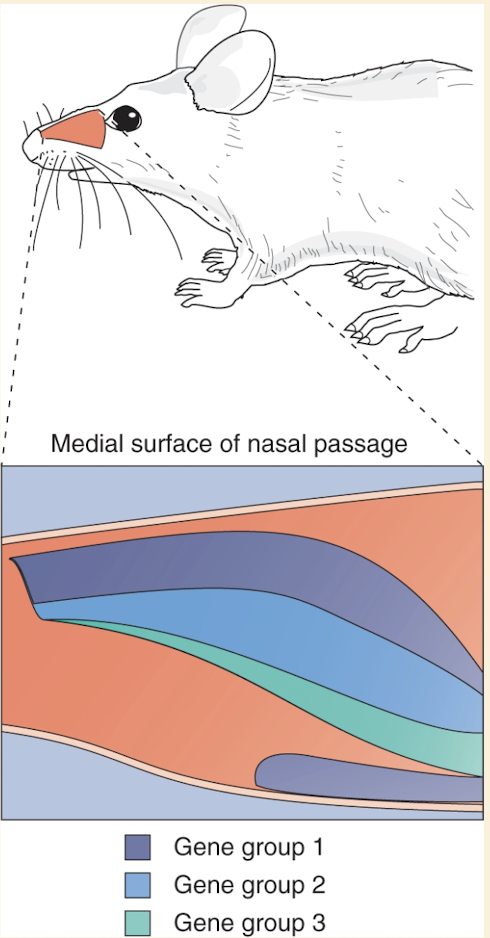
Receptor proteins have odorant binding sites on extracellular surface
Many diff types of odorant receptors
More than 1000 diff receptor genes in rodents (largest receptor genes in rodents yet discovered)
Humans have about 350
Each receptor gene has a unique structure allowing receptor proteins encoded by these genes to bind to different odorants
Olfactory receptor cells express few types of genes, often just one
Olfactory epithelium is organized into large zones that contain receptor cells that express a different subset of receptor genes
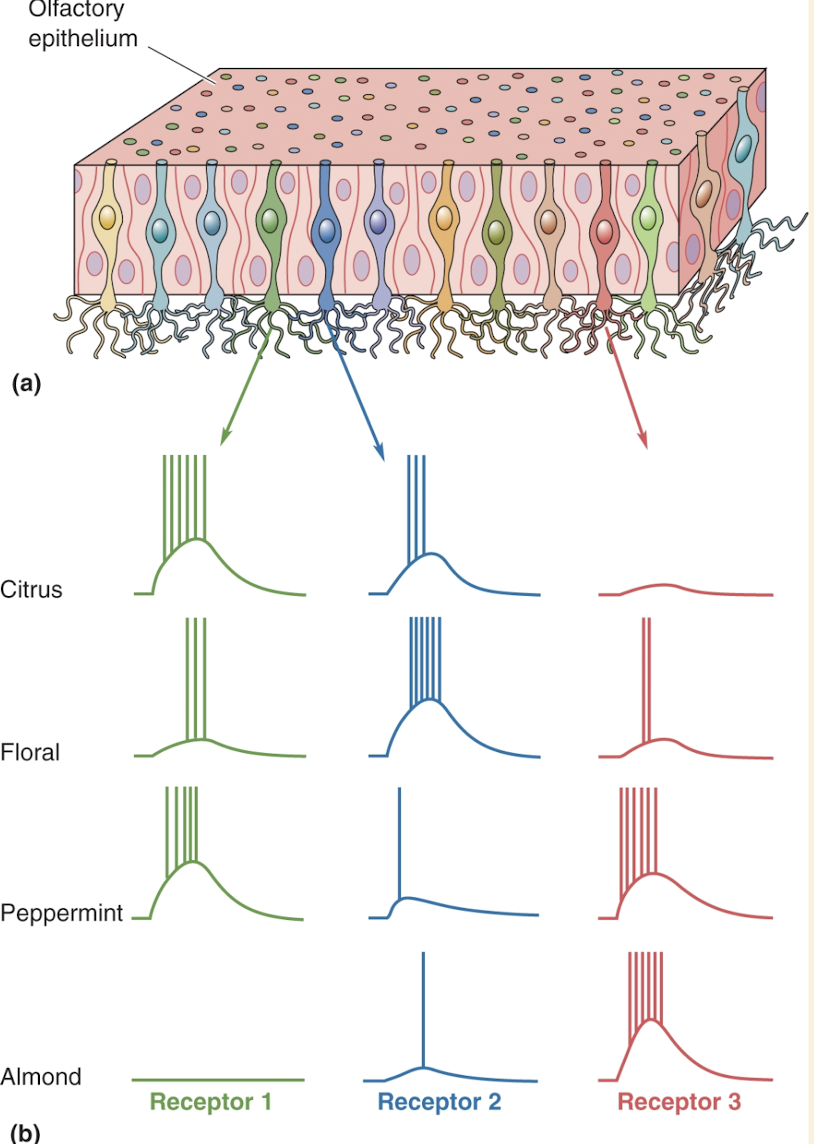
Olfactory receptor proteins belong to the G-protein coupled receptors family (have transmembrane alpha helices)
Large evidence that the only second messenger in olfactory transduction is cAMP
How does one discriminate among tens of thousands of odors
Involves population coding scheme
Each receptor protein binds different odorants more or less readily
Each receptor cell is less or more sensitive to odorants
Some cells are more sensitive to the chem structure of odorants they respond to than other cells are
Each odorant activates many of the receptors
More concentration of odorant = stronger response until strength saturates
Central olfactory pathways classify odors further after receiving info
Central Olfactory Pathways
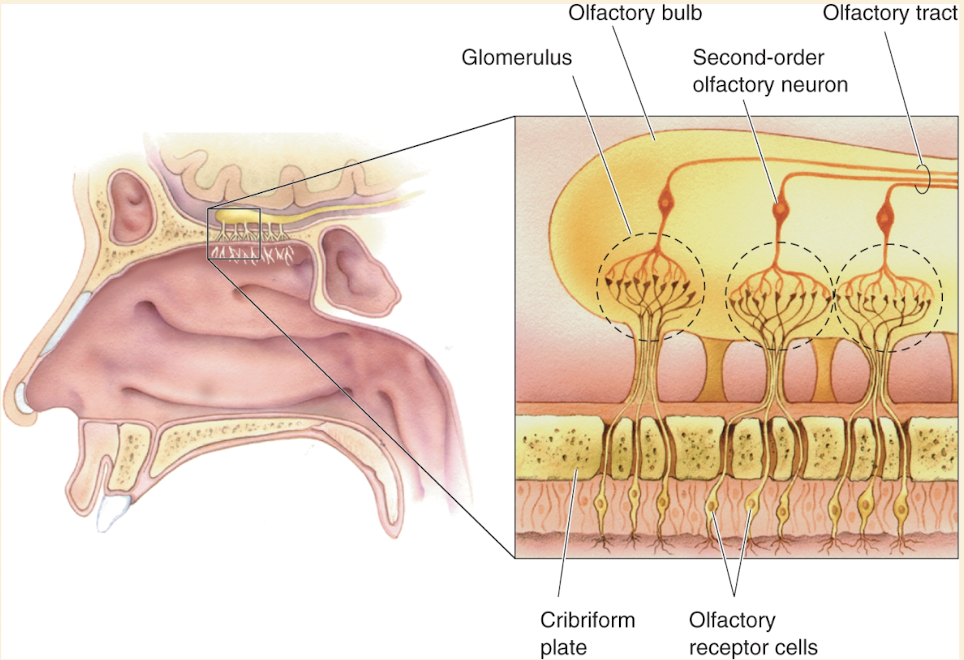
Olfactory receptor neurons send axons in two olfactory bulbs
Bulbs contain glomeruli
Each glomerulus has endings of 25k primary olfactory axons converging & terminating on dendrites of 2nd order olfactory neurons
Mapping of receptor cells onto glomeruli is precise
Each glomerulus receives input from only receptor cells of one particular type
Array of glomeruli within bulb is map of receptor genes expressed in the olfactory epithelium
Structures that receive olfactory connections
Output of axons from olfactory bulbs → olfactory tracts → olfactory cortex & temporal lobes
Anatomy of olfaction is unique, other sensory systems first pass info through the thalamus before it goes to the cerebral cortex
This produces direct & widespread effect on parts of forebrain that have roles in:
Odor discrimination
Emotion
Motivation
Certain kinds of memory
Conscious perceptions of smell may follow the path: olfactory tubercle → medial dorsal nucleus → orbitofrontal cortex
Spatial and Temporal Representations of Olfactory Information
Olfactory Population Coding
Uses responses of large population of receptors to encode specific stimulus
e.g. when presented w/citrus smell non of three different receptor cells can individually distinguish it clearly from other odors
Looking @ combination of responses from all three cells brain could distinguish the smell from others
Due to population coding humans can discriminate one trillion different combinations of odor stimuli
Temporal Coding
Evidence temporal patterns of spiking in olfactory neurons are feature of olfactory coding
Odors are slow stimuli, rapid timing of APs not needed for encoding timing of odors; rather, it is the sustained activation of olfactory receptors that contributes to our perception and differentiation of smells.
Temporal coding depends on timing of spikes to encode quality of odors